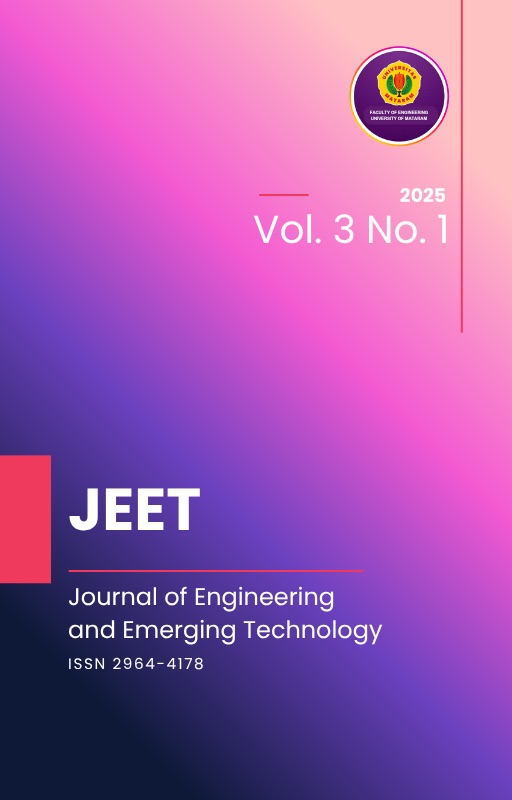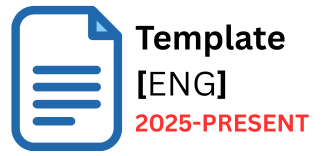Sentiment Analysis on Tiktok App Reviews on Google Play Store Using The Naive Bayes Approach
Keywords:
Sentiment Analysis, Naive Bayes, TikTok App ReviewAbstract
The TikTok application has gained global popularity, leading to a surge of user reviews on platforms such as the Google Play Store. This study aims to analyze user sentiment using the Naive Bayes algorithm by classifying reviews into positive and negative categories. The dataset, consisting of 1,914 user reviews, underwent preprocessing through case folding, stopword removal, and lemmatization. Sentiment labeling was carried out using TextBlob, and classification performance was evaluated using K-Fold Cross Validation and a confusion matrix. Results indicate that the Naive Bayes model achieved an average accuracy of 82.76%, demonstrating its effectiveness in identifying sentiment in user-generated content. Despite certain limitations, such as the absence of neutral sentiment and class imbalance, this research provides valuable insights into user perceptions of the TikTok app and highlights the importance of textual context in sentiment classification. For future work, it is recommended to expand the sentiment categories by including neutral labels and to experiment with other classification algorithms or deep learning approaches to improve accuracy and generalizabilityReferences
Kusuma, A., & Nugroho, A. (2021). Analisa Sentimen Pada Twitter Terhadap Kenaikan Tarif Dasar Listrik Dengan Metode Naïve Bayes. Jurnal Ilmiah Teknologi Informasi Asia, 15(2), 137-146.
Apriliani, N., Suarna, N., & Prihartono, W. (2024). Analisis Sentimen Review Penggunaan Tiktok Melalui Pendekatan Algoritma Naïve Bayes. JATI (Jurnal Mahasiswa Teknik Informatika), 7(6), 3725–3731. https://doi.org/10.36040/jati.v7i6.8299
Putri, K. S., Setiawan, I. R., & Pambudi, A. (2023). Analisis Sentimen Terhadap Brand Skincare Lokal Menggunakan Naïve Bayes Classifier. Technologia : Jurnal Ilmiah, 14(3), 227. https://doi.org/10.31602/tji.v14i3.11259
Lasulika, M. E. (2019). Komparasi Naïve Bayes, Support Vector Machine Dan K-Nearest Neighbor Untuk Mengetahui Akurasi Tertinggi Pada Prediksi Kelancaran Pembayaran Tv Kabel. ILKOM Jurnal Ilmiah, 11(1), 11-16.
E. Kartika and J. Gondohanindijo, “Rancang Bangun Model Sentimen Analisis Review Produk Pada Toko Online Menggunakan Naive Bayes,” Seminar Nasional Hasil Penelitian dan Pengabdian Kepada Masyarakat, pp. 201–212, 2020.
M. I. Fikri, T. S. Sabrila, Y. Azhar, and U. M. Malang, “Perbandingan Metode Naïve Bayes dan Support Vector Machine pada Analisis Sentimen Twitter,” SMATIKA JURNAL, vol. 10, no. 02, pp. 71–76, 2020.
N. M. A. J. Astari, Dewa Gede Hendra Divayana, and Gede Indrawan, “Analisis Sentimen Dokumen Twitter Mengenai Dampak Virus Corona Menggunakan Metode Naive Bayes Classifier,” Jurnal Sistem dan Informatika (JSI), vol. 15, no. 1, pp. 27–29, Nov. 2020, doi: 10.30864/jsi.v15i1.332.
A. Kurniawan and S. Adinugroho, “Analisis Sentimen Opini Film Menggunakan Metode Naïve Bayes dan Lexicon Based Features,” 2019. [Online]. Available: http://j-ptiik.ub.ac.id
A. A. Nabhan, B. Rahayudi, and D. E. Ratnawati, “Klasifikasi Tweets Masyarakat yang Membicarakan Layanan GoFood dan GoRide pada GoJek Dimedia Sosial Twitter Selama Masa Kenormalan Baru (New Normal) dengan Metode Naïve Bayes,” 2021. [Online]. Available: http://j-ptiik.ub.ac.id
Downloads
Published
Issue
Section
License
Copyright (c) 2025 Baiq Dwi Zulianti Kurrotaa'yun, Joselina Rizki Bimantari , Heri Wijayanto

This work is licensed under a Creative Commons Attribution-NonCommercial 4.0 International License.











